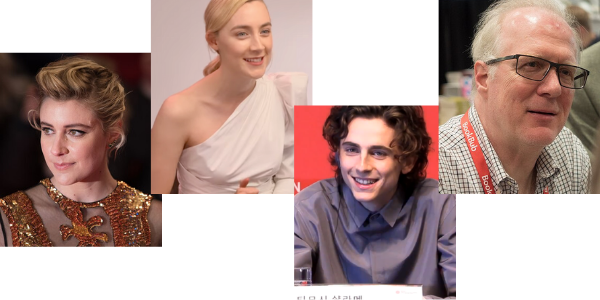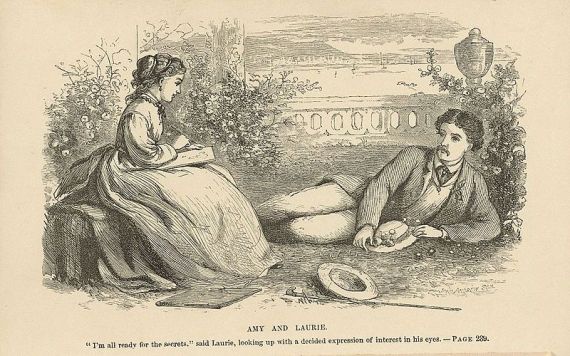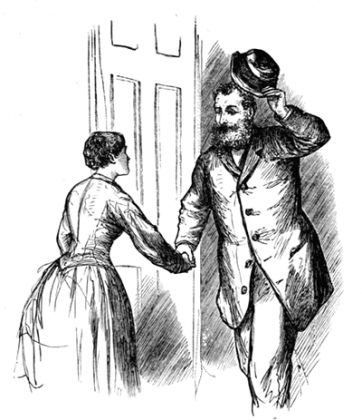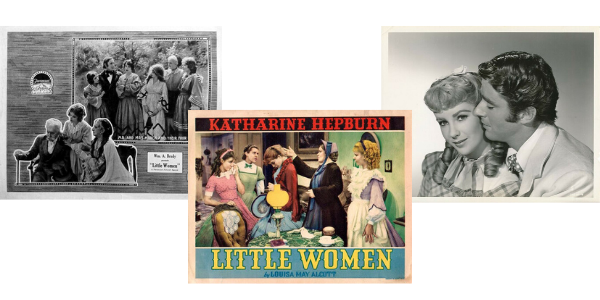An actor-turned-director, Greta Gerwig has announced the making of another depiction of Little Women. For Little Women, she’s collaborated again with Saoirse Ronan (Brooklyn, Mary Queen of Scots); meme inspiration Timothée Chalamet (of Call Me By Your Name fame); and American playwright/actor Tracy Letts (August: Osage County).

Alcott’s Little Women is a story about a family of four sisters (March sisters) growing and struggling through the Civil War.
Like Alcott, the March sisters were Transcendentalists. So, the piousness of an (unrealized) Transcendentalism ideal runs through Little Women, which has lent itself well to feminist and queer readings.
It is the first classic (aside from fairy stories) that has been recognized and adapted in a cartoon format by the Disney Corporation. The classic (Little Women) has been adopted across a variety of mediums such as plays, feature films, a Broadway musical, a 1980s Anime series, and a web series.
Greta Gerwig’s announcement of the movie “Little Women” has made people in the film adaptation and literary circle trepidatious.
Unlike the Gillian Armstrong-directed 1994 film, other adaptations like a television drama, Little Women (in 2017) had a tepid reception from the audience.
Do we need another film?
It’s easy to say that, in the current environment, where every film release is an adaptation, sequel or reboot, this cycle of the re-release is devoid of much creative ingenuity–and in some ways that’s true.
Armstrong’s version of a fairly dull classic text is… fine?
Do we really need another, a more millennial-friendly filmed version of this well-trodden text?
Gerwig’s film makes an ironclad case that, yes, there is room for a new Little Women adaptation in 2019.
Gerwig’s Little Women
Gerwig’s Little Women is the rare film adaptation of a well-trodden text that seeks to reset it for the contemporary. And, though Gerwig keeps the story’s Civil War American setting, through her radial contemporary reading Gerwig actually:
- elevates the material,
- makes meta-textual commentary on it (and on our static reception of it), and
- creates something new from a story many of us have read the same way since we were tweens.
In her adaptation, Gerwig plays with plot chronology and gathers material from Alcott’s other works to craft more rounded feminist, queer-coded heroes for a young, woke audience drawn to the cinema by the success of Lady Bird.
Through her clever casting tricks, she seeks to solve a few key problems that have lingered in the text. In her adaptations, Gerwig cast Lady Bird’s pair Ronan and Chalamet as Jo and Laurie. Unlike1994 Little Women, Gerwig has made them perform more of their platonic mooning. This solves the problem by convincing the audience about Jo and Laurie as never-to-be-lovers.
Gerwig’s reorganization of the novel’s timeline and put her own twist to Alcott’s Little Women novel. She gives us more time with two pairings that survive the story: Amy and Laurie, and Jo and Professor Bhaer.
With Amy and Laurie, Gerwig presents us with the economic and social reality of their match. While no one is ever totally convinced that Laurie has chosen Amy for genuinely romantic reasons (though Gerwig gives this contention a red-hot go), the match makes more practical sense here.

They show the chemistry between them through the way the pair tease each other.
Through Jo and Professor Bhaer, Gerwig’s shed light on the queer term in the novel. Through Bhaer, Gerwig teases the audience with the heterosexual romantic ideal: a handsome, kind, intellectual man, beloved by the March family, with whom Jo can truly share her life.

In the original text, Alcott meant Bhaer to be a literary troll to Jo/Laurie stans, and to those in the publishing industry who demanded a romantic ending for her heroine, whom she believed deserved to end the story “a literary spinster”.
In Gerwig’s adaptation, we have it both ways: Bhaer is unequivocally the thinking woman’s crumpet, but he’s also an in-joke for that in-the-know–as Jo spends the end of the film arguing with her publisher (Letts) about how her book, “Little Women”, should end, and her heroine “Jo” is ultimately paired with the delicious Bhaer under an umbrella at Concord station. He was meant to be an “odd” match for Jo, understood by no one (including the March family) but her.
Gerwig’s savvy ending is both a meta-textual commentary on what we, the audience, want from our female-driven texts (for our heroines to be paired up with a hottie in the rain) and also a nod to the likelihood of Alcott’s queer heritage–for she was a woman, in a time when sexuality was exceedingly narrow, who preferred to “paddle her own canoe”, as her Jo did.
The consensus on Little Women is that it is a feminist text and an enduring part of the oft-dismissed Western women’s canon. Gerwig’s film affirms what many of us believed the text to represent in the contemporary, but also prompts us to wonder how and why we made these assumptions about Alcott’s novel in the first place.
Bold, radical, and thoughtful, Gerwig’s film insists on its own existence, as well as on the value of its beloved source material.


